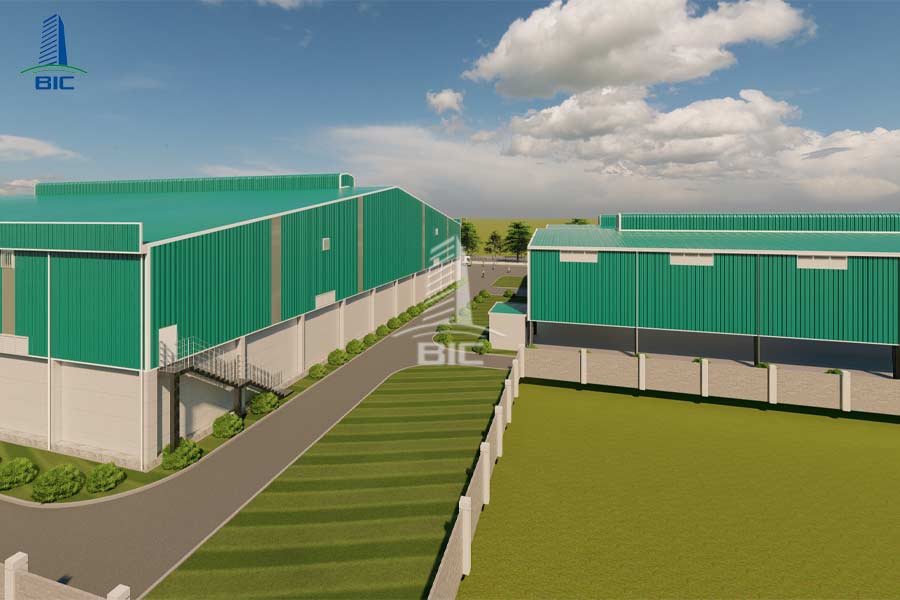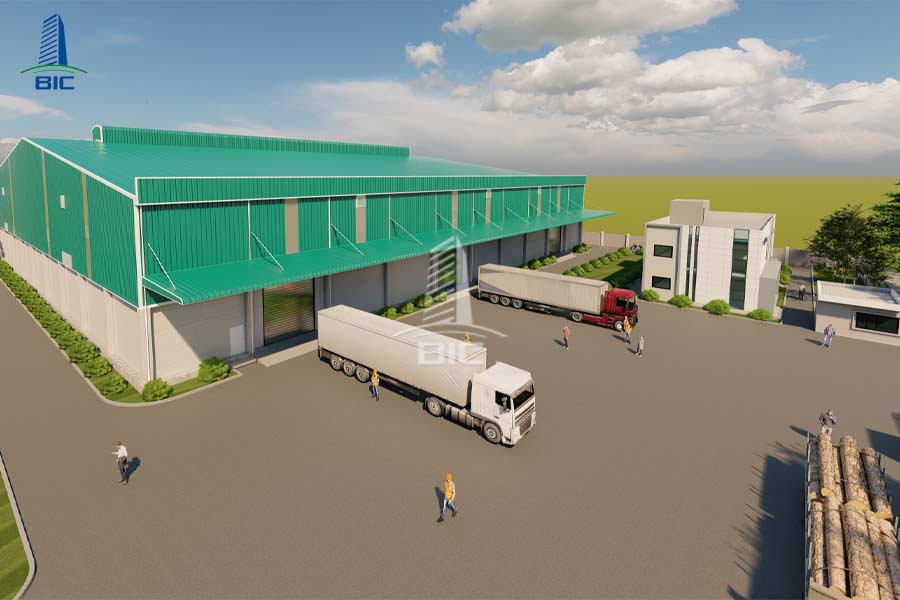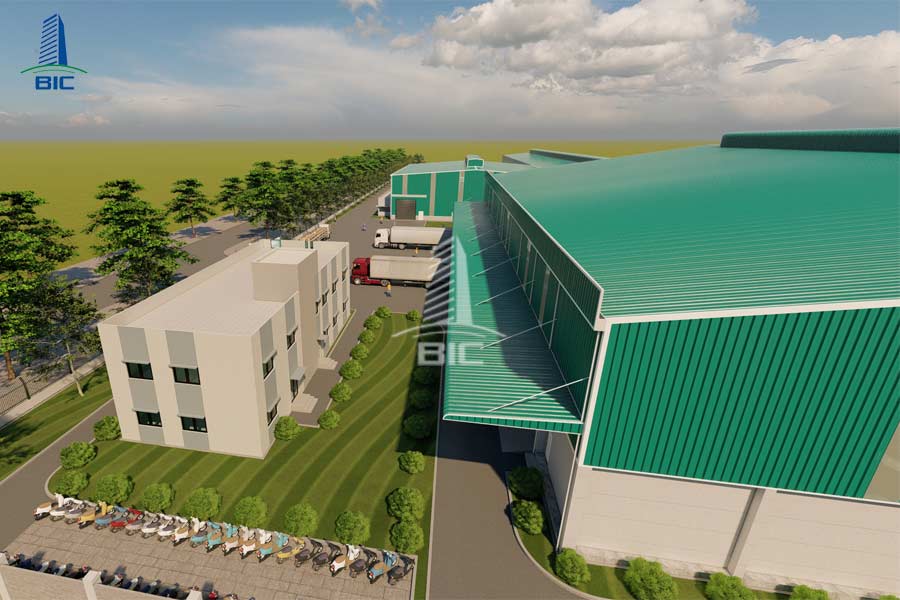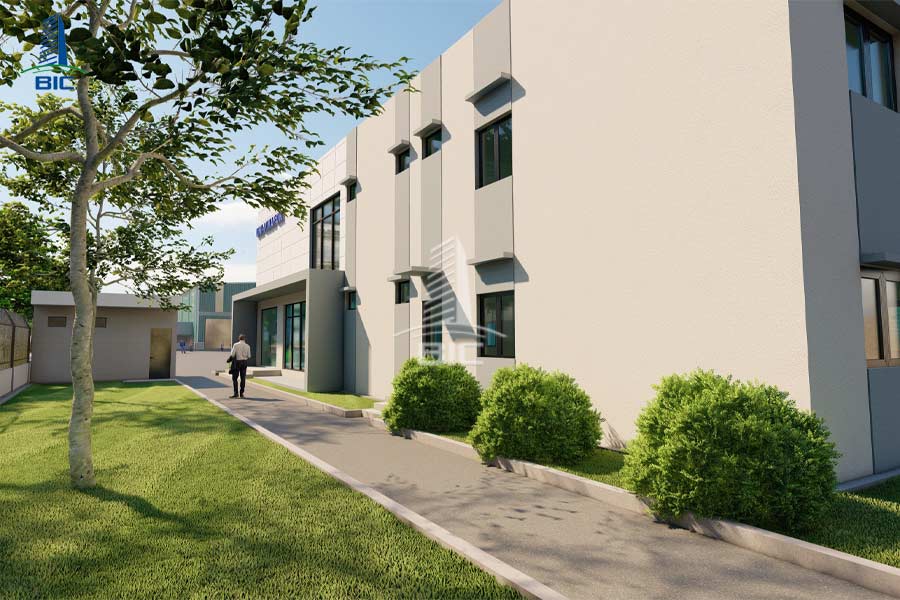
Factory design is a crucial starting point that determines the efficiency of production, operation, and even long-term investment costs for businesses. However, to obtain an optimized functional layout that meets technical standards and aligns with your development goals, selecting a professional design company is key.
In a market filled with numerous design firms offering varied pricing and commitments, how do you choose the right partner one with capability and a deep understanding of your needs? In this article, BIC shares core criteria to help you select a reputable factory design company, minimize risks, and optimize your investment from the outset.
In industrial construction, a factory design drawing is more than just a technical document—it’s the “brain” of the entire project. The design shapes everything from space planning and production flow to internal operations, and it even impacts your business’s competitive edge in the years to come. That’s why choosing the right design company is a strategic move, not just a technical step.
A professional design company doesn’t just offer technical design expertise they also plan and propose construction solutions. They can anticipate technical conflicts and construction risks while offering design solutions tailored to environmental conditions. Every technical aspect is clearly illustrated in the drawings, helping construction teams execute the work accurately without costly errors or delays.
.jpg)
Poorly laid-out production lines or lack of understanding about warehouse, forklift, or cold storage requirements can lead to inefficient operations, high costs, and wasted space. On the other hand, a seasoned design company can optimize production flow, reduce redundant processes, and cut down on unnecessary personnel.
A design firm well-versed in regulatory standards (QCVN, TCVN, GMP, Fire Protection, ISO, etc.) will streamline your legal approval process saving you from repeated corrections and resubmissions. This shortens the waiting period and prevents delays, especially important for urgent or foreign-invested projects.
Choosing the wrong design partner can lead to a cascade of hidden costs: impractical designs, multiple revisions, rejected permits, or even complete rework. These setbacks not only inflate your budget but also delay the project, disrupting your production timeline and opportunities. In contrast, selecting the right company from the start is a profitable investment.

A factory design is not just a technical foundation it’s a strategic tool throughout your business lifecycle. Below are four essential criteria every investor should evaluate carefully:
In factory design, experience is more than an advantage it’s proof of execution capability. An experienced firm delivers not only compliant designs but also practical solutions tailored to actual site and industry needs.
Check:
- Number and size of completed projects, especially those aligned with your industry and production goals.
- Industry-specific knowledge: Designing a food processing plant is vastly different from a precision engineering facility or logistics center. A firm experienced in your field understands specialized technical needs, optimizes layout and flow, and reduces errors from the start.
Experience helps improve drawing accuracy and saves time, cost, and effort during both implementation and operation.
Legal qualifications are a prerequisite for regulatory approvals, lawful construction, and operational permits. A design firm lacking proper certifications cannot legally apply for construction permits, fire safety approvals, or final inspection acceptance.
Without legal credentials, even with a complete design, the investor cannot legally build or operate the facility resulting in possible shutdowns, penalties, or costly rework.
To mitigate this:
- Verify the company’s construction design practice certificate (issued by the Ministry or Department of Construction for industrial design).
- Check individual licenses of engineers and architects responsible for architecture, structural design, MEP, fire safety, etc.
Incomplete legal compliance can halt a project mid-way, causing major financial and opportunity losses.

Design quotes may seem procedural but are crucial for transparency, budget control, and avoiding disputes. Vague quotes with undefined scopes often cause serious problems during implementation.
Common risks with unclear pricing:
- Misunderstandings or disputes about scope of work.
- Frequent “out-of-contract” charges that disrupt your financial plan.
- Overlapping or missing design elements leading to conflicts during construction.
A professional firm will:
- List out detailed components: architecture, structure, MEP, fire safety, infrastructure, etc.
- Specify handover timeline, number of free revisions, and deliverable formats (CAD, PDF, printed A0/A3).
- Commit to overall progress, allowing you to coordinate with other stakeholders effectively.
One major reason for project delays, budget overruns, and conflict is hiring separate design and construction teams. Without unified management, coordination becomes inefficient, causing:
- Technical conflicts between drawings and real-world execution, leading to redesign and delays.
- Increased construction costs from undetected design flaws.
- Blame-shifting between design and construction teams.
Choosing a company offering turnkey design-build services provides advantages:
- End-to-end technical consistency from concept to execution.
- Single point of accountability, simplifying project control over time, cost, and quality.
- Fewer unexpected issues and shorter project timelines.
Factory design is not merely technical it’s the foundation of your production system. Take the time to research carefully and choose a capable, trustworthy, and collaborative partner.

Many investors make poor decisions early in the selection process, resulting in long-term issues during construction and operation. Here are three of the most common and costly mistakes:
Opting for the cheapest design firm may seem cost-effective, but it carries hidden risks. Extremely low quotes often omit essential services, leading to:
- Poor quality drawings.
- Construction difficulties requiring outside consultants or major revisions.
- Continuous unexpected costs from redesign, delays, or hiring a new firm to complete the work.
Design fees typically represent only 1–3% of total construction costs, yet they impact 100% of the execution phase. Subpar designs can derail your entire budget and schedule.
Choosing the cheapest firm may end up being the most expensive mistake long-term.
Many firms present polished portfolios but lack proof of real-world execution. If you don’t verify:
- You might be hiring a team that’s never designed a factory.
- You might be misled by projects actually completed by other firms.
Simple but effective solution: Ask to see completed construction drawings, actual site photos, and references from past clients. A professional firm will readily provide them.

Another common pitfall is the lack of clear, upfront communication. Some investors don’t specify requirements, or design teams fail to ask the right questions:
- What’s the production line process?
- Are dedicated packing zones needed?
- Will the facility require environmental systems, cold storage, clean rooms, or support spaces?
The result: unrealistic designs needing multiple revisions, delaying progress and inflating costs. In some cases, construction must be partially demolished to accommodate changes causing major losses.
One wrong choice in design partner can throw the entire project off track. Don’t let attractive pricing or superficial evaluations cost you time, money, and momentum.
Factory design is not just a technical step it’s a strategic decision shaping the future of your production, operations, and expansion. Contact BIC today for expert consultation from a leading industrial factory design company.